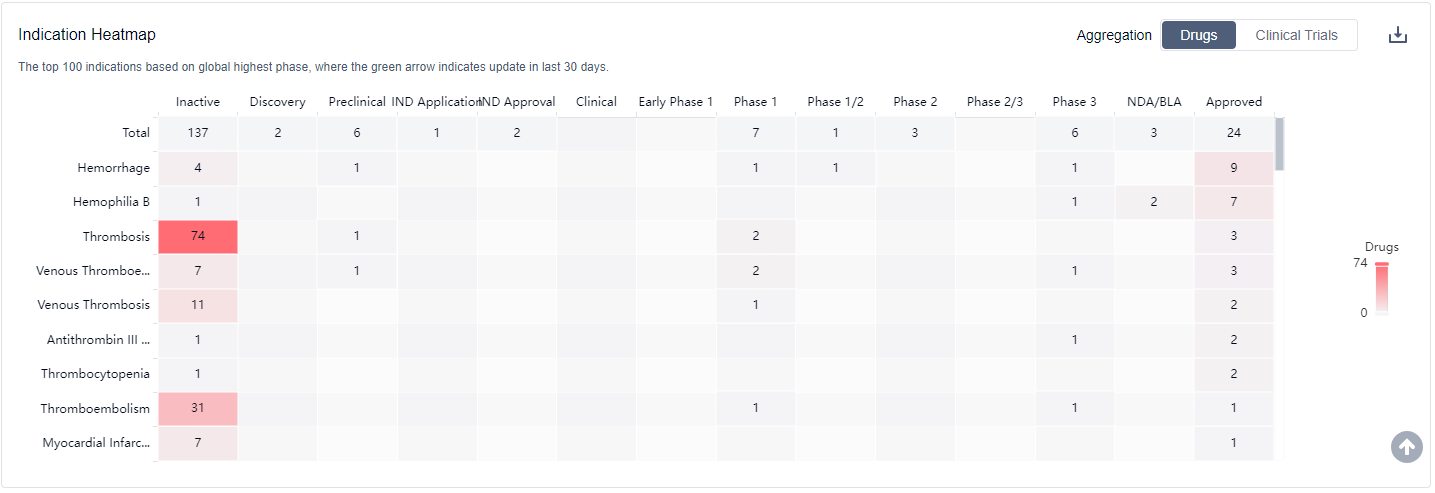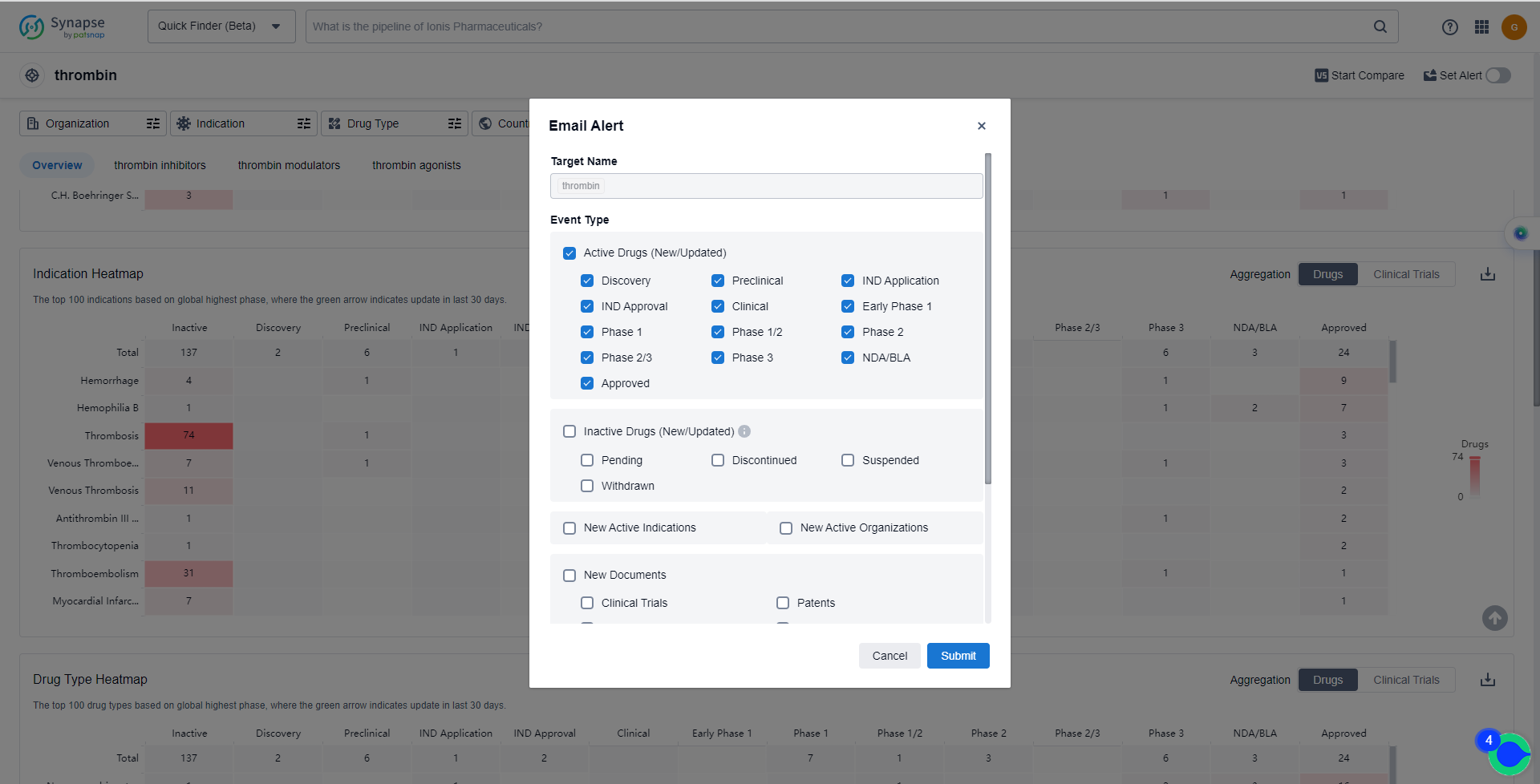Deciphering Thrombin Inhibitors and Keeping Up with Their Recent Developments
Thrombin is a crucial enzyme in the human body that plays a vital role in the blood clotting process, known as coagulation. It is produced from its precursor, prothrombin, and is activated in response to injury or damage to blood vessels. Thrombin acts as a catalyst in the conversion of fibrinogen to fibrin, forming a mesh-like structure that helps in the formation of blood clots to prevent excessive bleeding. Additionally, thrombin also activates other factors involved in the coagulation cascade, amplifying the clotting response. Its precise regulation is essential to maintain the delicate balance between clot formation and prevention of unwanted clotting within the body.
The development of thrombin inhibitors has been a significant advancement in the field of medicine. The first direct thrombin inhibitor (DTI) was hirudin, which became more easily available with genetic engineering. DTIs have undergone rapid development since the 90s. Before the use of DTIs, the therapy and prophylaxis for anticoagulation had stayed the same for over 50 years with the use of heparin derivatives and warfarin.
The analysis of the current competitive landscape and future development of target thrombin reveals several key findings. Grifols SA, China National Pharmaceutical Group Co., Ltd., and Hualan Biological Engineering, Inc. are among the companies growing fastest under this target, with Grifols SA having the highest stage of development. Hemorrhage is the most common indication for approved drugs, followed by indications such as hemophilia B, thrombosis, and venous thromboembolism. Non-recombinant coagulation factors are progressing rapidly, indicating intense competition around innovative drugs. China is developing rapidly under this target, with the highest number of approved drugs. However, further research and development are needed to explore the potential of inactive drugs in various countries/locations. Overall, the target thrombin presents opportunities for companies and researchers to develop effective treatments for various indications related to blood clotting disorders.
How do they work?
Thrombin inhibitors are a type of medication that specifically target and inhibit the activity of thrombin, which is a key enzyme involved in blood clotting. Thrombin is responsible for converting fibrinogen into fibrin, which forms a mesh-like structure to help stop bleeding by forming blood clots. However, excessive or inappropriate blood clotting can lead to serious conditions such as deep vein thrombosis, pulmonary embolism, or stroke.
Thrombin inhibitors work by binding to thrombin and preventing its enzymatic activity, thereby reducing the formation of blood clots. They can be classified into two main types: direct thrombin inhibitors and indirect thrombin inhibitors.
Direct thrombin inhibitors directly bind to and inhibit the active site of thrombin, preventing its ability to convert fibrinogen into fibrin. Examples of direct thrombin inhibitors include dabigatran and argatroban.
Indirect thrombin inhibitors, on the other hand, work by targeting other molecules in the blood clotting cascade to indirectly inhibit thrombin activity. One example of an indirect thrombin inhibitor is heparin, which enhances the activity of antithrombin III, a natural inhibitor of thrombin.
Thrombin inhibitors are commonly used in the prevention and treatment of various thrombotic disorders, such as deep vein thrombosis, atrial fibrillation, and pulmonary embolism. They can also be used during certain surgical procedures to reduce the risk of blood clots. However, it is important to closely monitor patients receiving thrombin inhibitors, as they can increase the risk of bleeding.
List of thrombin Inhibitors
The currently marketed thrombin inhibitors include:
- Human prothrombin complex (Guangdong Shuanglin)
- Human prothrombin complex (Tonrol)
- Human prothrombin complex (Chengdu Rongsheng)
- Human prothrombin complex (Boya Bio)
- Human Prothrombin Complex (Guangdong Wellen Biological Pharmaceutical)
- Human prothrombin complex(Sinopharm Group Shanghai Blood Products)
- Human Antithrombin III(Hemarus Therapeutics Ltd.)
- Human prothrombin complex(CSL bering)
- Human prothrombin complex(LFB Biotechnologies SASU)
- Human Prothrombin Complex(Harbin Pacific Biopharmaceutical)
For more information, please click on the image below.
What are thrombin inhibitors used for?
Thrombin inhibitors are commonly used in the prevention and treatment of various thrombotic disorders, such as deep vein thrombosis, atrial fibrillation, and pulmonary embolism. For more information, please click on the image below to log in and search.
How to obtain the latest development progress of thrombin inhibitors?
In the Synapse database, you can keep abreast of the latest research and development advances of thrombin inhibitors anywhere and anytime, daily or weekly, through the "Set Alert" function. Click on the image below to embark on a brand new journey of drug discovery!








